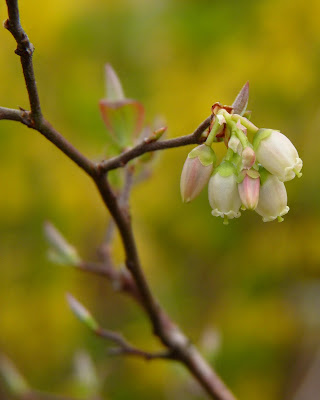These tiny white and pink flowers are on a northern highbush blueberry (
Vaccinium corymbosum). This shrub is native to North America and grows especially well in moist, acidic habitats like New Jersey's Pine Barrens. Cultivars of this species are grown commercially to produce the blueberries familiar from stores and farmer's markets. In the wild, this plant's natural form provides food for birds and other animals. I have tasted a few wild highbush blueberries on hikes and found them very sweet, more so than commercial blueberries, and without the bitter notes I sometimes detect with the latter.
Northern highbush blueberry serves as an important host plant for many insects. A search of the HOSTS database for
Vaccinium corymbosum brings up 42 records involving at least 30 species of Lepidoptera. (A search for
Vaccinium turns up over 1000 records.) There are probably many more insects in other orders that depend on the shrub in one way or another. One such species is the Blueberry Azure (
Celastrina lucia), shown below.






